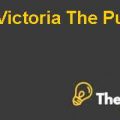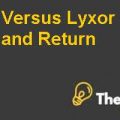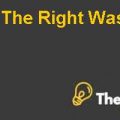
Background
Paper and More was in the business of selling different kind of paper products. This included a paper for home and office printing, envelopes, folders, tickets, etc. Mr. Kevin Brown opened the first Paper and More store in 1995 using his personal finances. For the past two years, Mr. Brown had sought to maintain goodwill by keeping a high level of inventory to meet customer's demand. The current store was conveniently located at just three hours from its distributors. In 1997, Mr. Brown wanted to expand his business and open eight more stores in next two and a half years. For this, he required funding from external sources like a venture capitalist. Mr. Mathew Abraham, a venture capitalist was concerned about how store operations would scale with expansion. Mr. Abraham wanted Mr. Brown to address the following concerns:
- Up-front store costs;
This included the cost of operating new stores, including sitting, inventory, etc.
b. Economies of Scale
This included producing in bulk amount to reduce the per unit cost.
c. Operating in different markets
This included the potential of Paper and More to operate in different markets. The inventory management was the core of the above-mentioned issues. Proper inventory management would address all of the above concerns. Mr. Abraham wanted Mr. More to have a separate management team for inventory management if he wants to be successful in getting the funding. Mr. Brown decided to analyze the sales for a staple brand for office and home printing: Great White Multiuse from International Paper. The company used to follow 100% in stock rate policy. However, now Mr. Brown feels that 98% fill rate was also acceptable to the customers. So he decided to establish an order up to point policy, so whenever he checked his inventory levels, he just had to order enough to bring his inventory up to a target order up to level. Mr. Brown thought of how much he can reduce the inventory levels to achieve 98% fill rate. Mr. Brown considered an Order up to the policy, so that each time he checked his inventory level, he would know how much to order to bring his inventory up to a target order up to level. He also assumed there was no substitute to another product in case of a stock out.
Analysis #1
Q # a)
i) What order-up-to point gives a 98% in-stock rate (Type 1 service)?
(Ans-i)
The 98% in stock rate (Type 1 service) is falling between the ranges of the Order up to point from 76 to 82.
ii) A 98% fill rate (Type 2 service)?
(Ans-ii)
The 98% fill rate (Type 2 service) is ranging from the 67 to 69 Orders up to points.
iii) Why are they not the same?
(Ans-iii)
The order up to level is the maximum inventory level that P&M is willing to maintain, and the percentage of demand satisfied from in-stock inventory is stated as fill rate or is estimated fraction of demand served directly from stock. In stock in a period means all the demand was satisfied in that period. Both fill rate and in stock percentage can be different. If fill rate is less than 100%, then all the demand is not satisfied with the inventory on hand, and there are some backorders, and if the demand is more than the order up to the quantity, then there will be stock out and in stock rate will be less than 100%. Fill rate can be increased by back orders. So it can be high for a low order up to the quantity as well. However, for the same order up to the quantity, in stock probability can be low as all the demand may not be covered up by the in stock inventory. For in stock probability to be high, large order up to the quantity may be required. That is why in the above two cases, order up to the point is different for 98% fill rate and 98% in stock rate. Moreover, order up to point for in stock rate is more.
iv) Why is there a tendency for one to be higher than the other?
(Ans-iv)
The in stock probability is approximately. The fill rate at the end of the season. It is the probability that a customer’s demand can be fulfilled at the end of the season. High fill rate means most of the customers during the season have been satisfied (resulting in high fill rate) even if some customer at the end of the season experiences a stock out. This is because in case of a stock out, there can be back ordered and fill rate can be increased. However, for in stock probability there if there is a stock out, there is no backorder. So fill rate can be higher than the in stock probability...............
This is just a sample partial case solution. Please place the order on the website to order your own originally done case solution.













